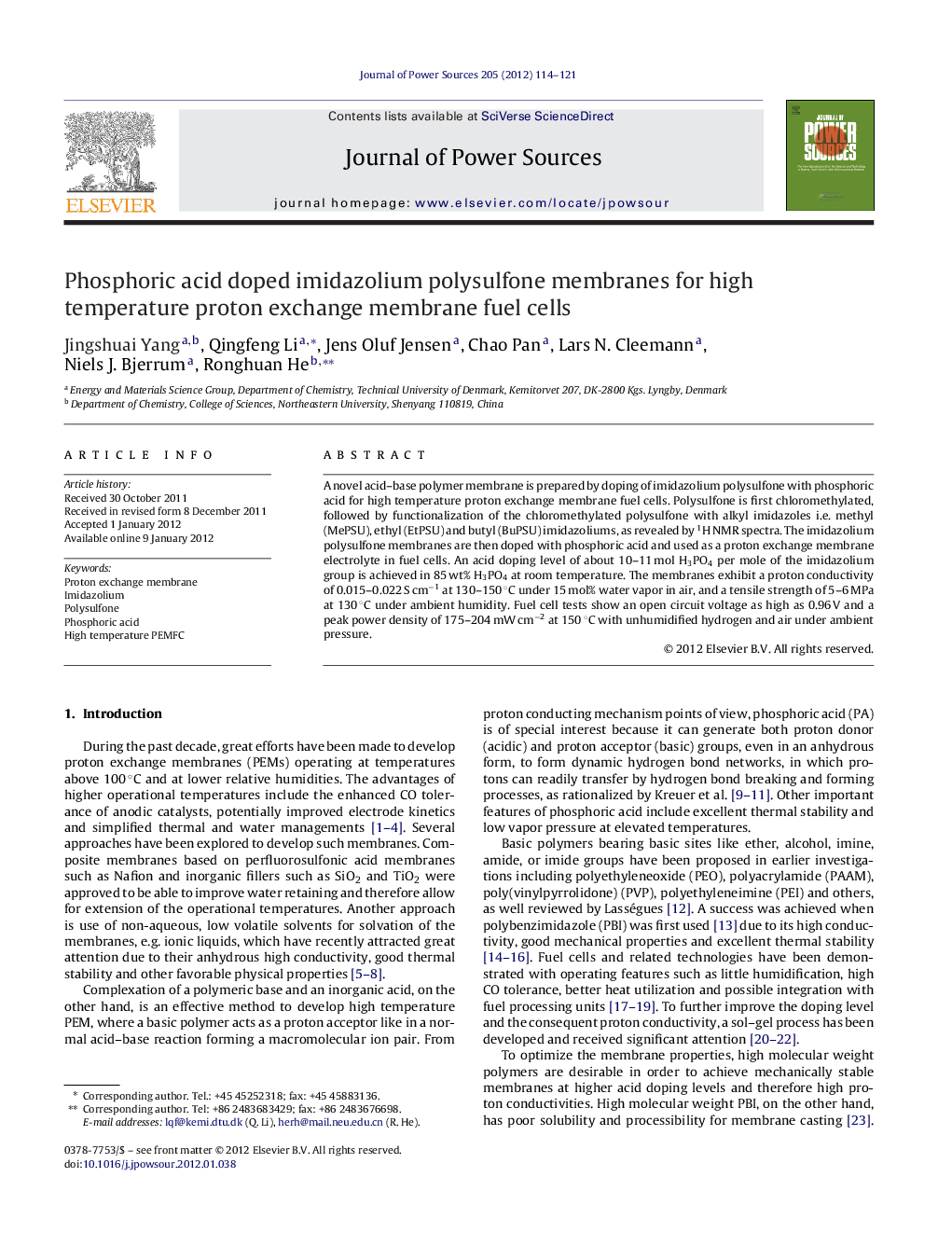| Article ID | Journal | Published Year | Pages | File Type |
|---|---|---|---|---|
| 1288121 | Journal of Power Sources | 2012 | 8 Pages |
A novel acid–base polymer membrane is prepared by doping of imidazolium polysulfone with phosphoric acid for high temperature proton exchange membrane fuel cells. Polysulfone is first chloromethylated, followed by functionalization of the chloromethylated polysulfone with alkyl imidazoles i.e. methyl (MePSU), ethyl (EtPSU) and butyl (BuPSU) imidazoliums, as revealed by 1H NMR spectra. The imidazolium polysulfone membranes are then doped with phosphoric acid and used as a proton exchange membrane electrolyte in fuel cells. An acid doping level of about 10–11 mol H3PO4 per mole of the imidazolium group is achieved in 85 wt% H3PO4 at room temperature. The membranes exhibit a proton conductivity of 0.015–0.022 S cm−1 at 130–150 °C under 15 mol% water vapor in air, and a tensile strength of 5–6 MPa at 130 °C under ambient humidity. Fuel cell tests show an open circuit voltage as high as 0.96 V and a peak power density of 175–204 mW cm−2 at 150 °C with unhumidified hydrogen and air under ambient pressure.
► Synthetic modification of polysulfone with alkyl imidazoles to provide functional basic sites. ► Acid doping of the polymer membranes using phosphoric acid for obtaining proton conductivity. ► High acid doping levels and hence proton conductivity achieved. ► Membrane characterizations of the proton exchange membranes including swelling, conductivity, mechanical strength. ► Technical feasibility of the proton exchange membrane demonstrated by fuel cell tests.
